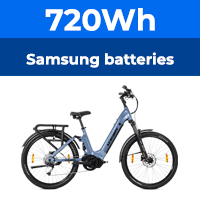There isn't much relevance in a torque figure quoted in isolation, but in an e-bike world where suppliers are scared to quote true peak powers since the law only allows 250 Watts, having something else to quote and maybe exaggerate is attractive.
As Scotty says, crank drive units can have their optimum combination point of torque and power shifted to match the road circumstances, so they have an advantage for steep climbs. Have a look at the notional graphs below (click image to enlarge) which show how electric motor torque is maximum at zero revs, declining as the revs rise. Power meanwhile is nil at zero revs but rises as the revs rise, and a point is reached where the pairing of torque and power is at the optimum, generally about half way up the rev range as shown in the centre graph. This is the optimum climb speed for an e-bike, fixed for a hub motor, shiftable by gear changing on a crank drive:

You can see how in the right hand graph representing higher road speeds, both torque and power are reduced, therefore using less current so in it's in this area that the point of maximum efficiency resides, a little below maximum speed.
Torque is directly related to a motor's power, the more powerful motors having more torque at the motor shaft. In general, hub motor bikes often have higher peak powers than crank drive units to make up for the disadvantage of not being able to shift the maximum torque point. This means that on moderate hills that they are able to climb at their optimum point, they can be much faster than the crank drive which is propelling the bike through a lower gear. The downside comes on steeper hills where the optimum speed cannot be maintained, so the speed reduction increasingly shifts the speed down into the lower motor power regions when only the rider can compensate with more effort.
.








